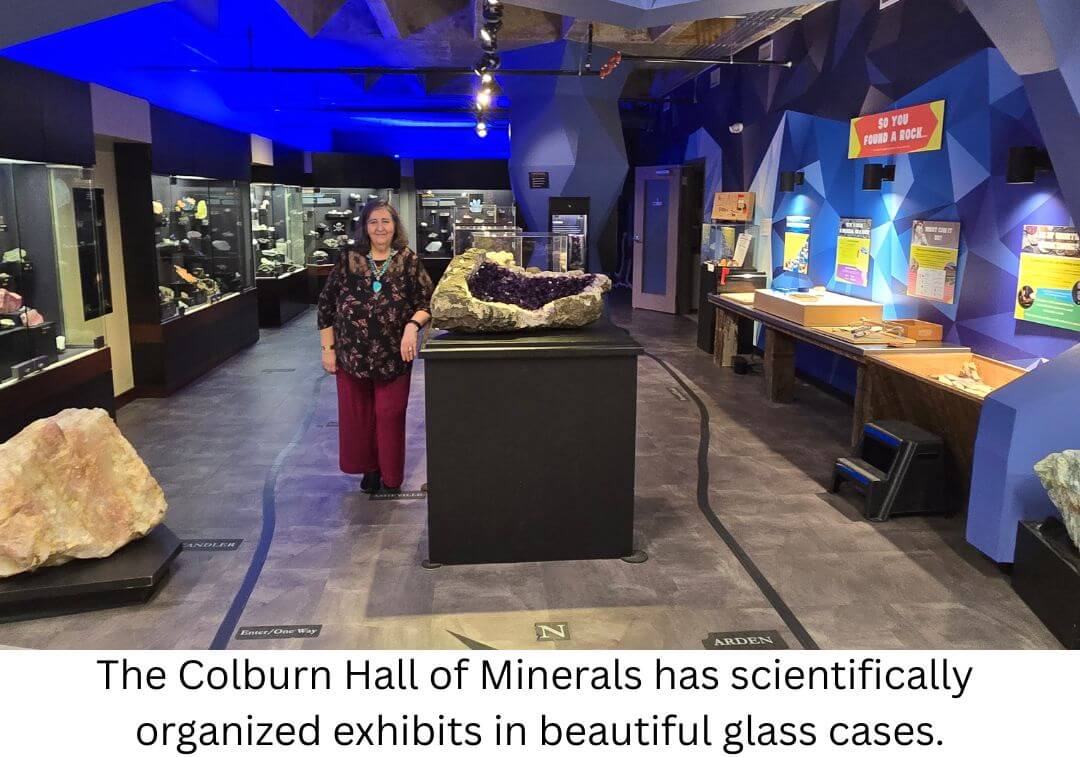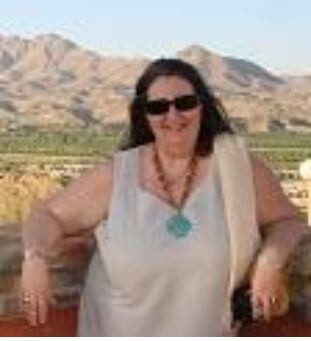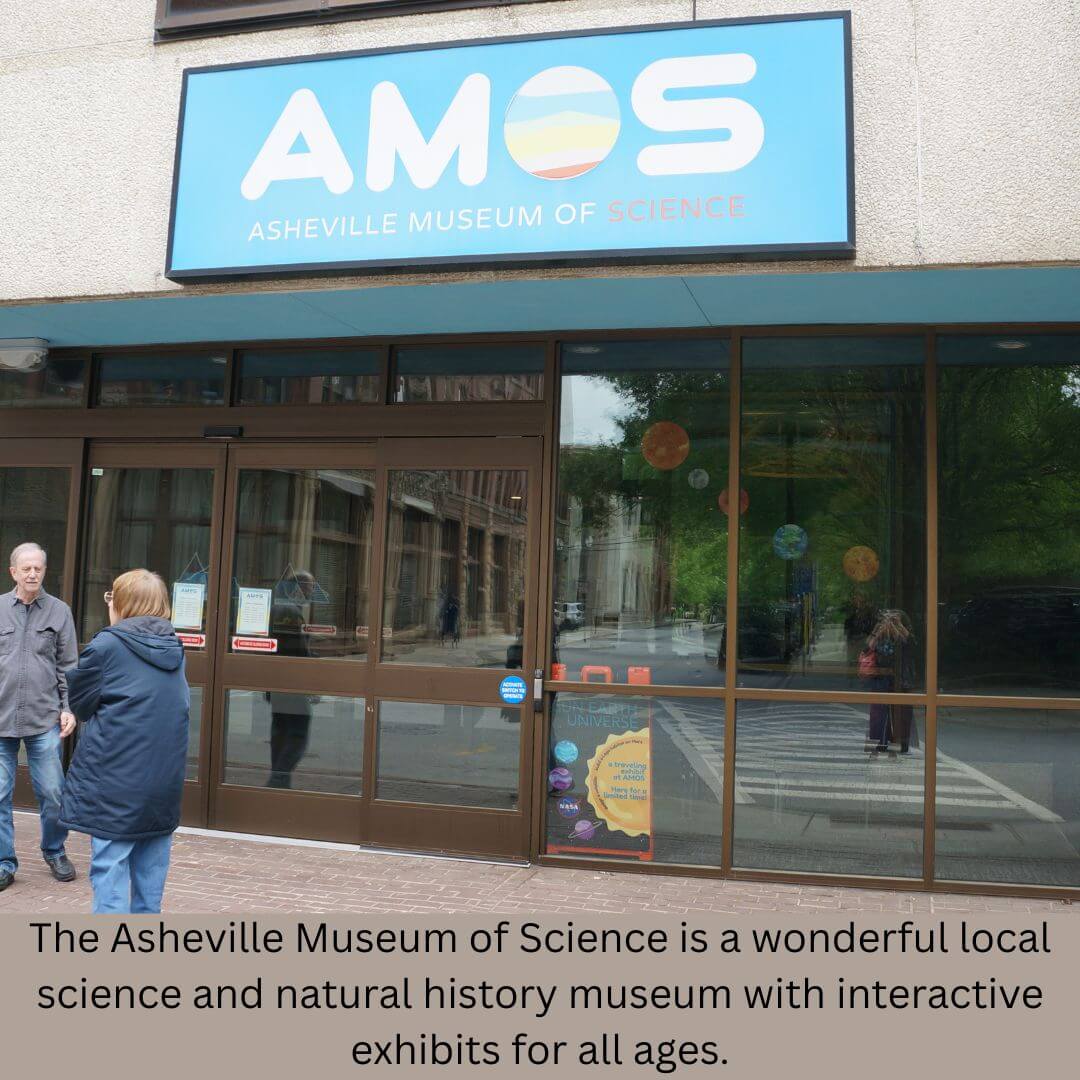During my recent trip to North Carolina, I visited the Asheville Museum of Science (AMOS) twice, accompanied by two separate groups of friends. It is a local science and natural history museum with interactive exhibits for all ages. If you are heading to Franklin for the upcoming gem shows in July, put this wonderful museum on your itinerary.
The Star of the Carolinas
The Star of the Carolinas is a large blue-gray star sapphire, cut as an oval-shaped cabochon gem. The original rough stone weighed 2,847.50 carats, and the finished gem weighs 1,445 carats. This star sapphire measures approximately 63 x 57.5 x 37.5 mm. It was listed as the world’s largest star sapphire in the Guinness Book of World Records in 1989. The overall quality of a natural star sapphire depends on the quality of the cut, color, clarity, and definition of the star. In sapphires, a six-rayed star appears to float across the surface of the stone.
The rough sapphire was discovered in 1987 at the Old Pressley Mine, located in Haywood County near Canton, North Carolina, by Bruce Caminiti (Star Gems by Martin Steinbach). The gem was cut by master gem cutter John Robinson (1944-2023), born in Kentucky but lived in Nixa, Missouri, where his wife, Faith, owns the Infinity Fine Jewelry store.
The gem is one of the focal pieces of the Asheville Museum of Science (AMOS), on loan from the Stewart B. Coleman Family. It is part of their Gemstone Collection, which contains over 1,000 cut gemstones from around the world.
The Asheville Museum of Science (AMOS)
From rocks and minerals to fossils, and their newest exhibit, "Our Changing World," there is something for everyone in this museum. I loved watching the young visitors explore the Climb Into Forest Ecology playground, designed to ignite their curiosity about forest ecosystems.
The exhibit we truly enjoyed and spent most time in was the Colburn Hall of Minerals. The hall honors the legacy of the museum previously known as the Colburn Earth Science Museum (originally the Burnham S. Colburn Memorial Museum, which opened in 1960). Since the museum relocated to its current location in 2016, its scope has been expanded to be more inclusive, and it was renamed the Asheville Museum of Science (AMOS).
The Colburn Hall of Minerals is named after Burnham Standish Colburn, an engineer and bank president, who retired in the 1920s to Biltmore Forest near Asheville. Like many of us, he had a love of collecting minerals and gems. He thought that “collecting minerals was just the right hobby for him.” Colburn loved North Carolina minerals, especially hiddenite, the rare green variety of spodumene, found near the town of Hiddenite in Alexander County. He amassed one of the largest collections of hiddenites.

The Colburn Hall of Minerals Exhibits
The exhibits are scientifically organized in beautiful glass cases, including North Carolina minerals, rocks, hazardous minerals, and birthstones. The collection comprises over 4,500 specimens from around the world. Large aquamarine crystals from the Ray Mine and huge almandine garnet crystals from the nearby Little Pine Mine in Madison County are featured in one case.
Another case is devoted to gold mining in North Carolina, chronicling the first gold discovery at the Reed Gold Mine in 1799 and how North Carolina led the country in gold production until 1848, following the gold discoveries of the West. I was also intrigued by a case comprising gemstones, brooches, cuff links, and unique gold stick pins, many of which featured North Carolina gemstones, from the Sondley Gem Collection.
A number of gigantic mineral specimens catch the visitor’s attention – a giant amethyst crystal geode, an enormous aquamarine crystal, a Herkimer ‘diamond’ vug specimen, and a large rose quartz specimen. Additionally, a significant portion of the wall is dedicated to educational exhibits for both young and adult visitors.
I coordinated our special museum tours ahead of time — one before and one after our EFMLS Wildacres Workshop — with Maggie (Operations Manager), Melody (Operations/Museum Assistant Manager), and docent volunteer GIA gemologist Mark Hartzman. I am very thankful for the warm welcome we received from all of them and their enthusiasm to share their knowledge with us.
The museum’s gift shop offers a variety of items for sale, including mineral specimens, jewelry, toys, and books. Visit them at https://ashevillescience.org.
If you are heading to Franklin for the gem shows, you may also like to read my recently published article, Franklin, North Carolina – In Search of Ruby Treasures.
 Helen Serras-Herman, a 2003 inductee into the National Lapidary Hall of Fame, is an acclaimed gem sculptor and FGA gemologist with over 40 years of experience in creating unique gem sculptures and jewelry art. See her work at www.gemartcenter.com and her business Facebook page, Gem Art Center/Helen Serras-Herman. All Photos © Helen Serras-Herman
Helen Serras-Herman, a 2003 inductee into the National Lapidary Hall of Fame, is an acclaimed gem sculptor and FGA gemologist with over 40 years of experience in creating unique gem sculptures and jewelry art. See her work at www.gemartcenter.com and her business Facebook page, Gem Art Center/Helen Serras-Herman. All Photos © Helen Serras-Herman




